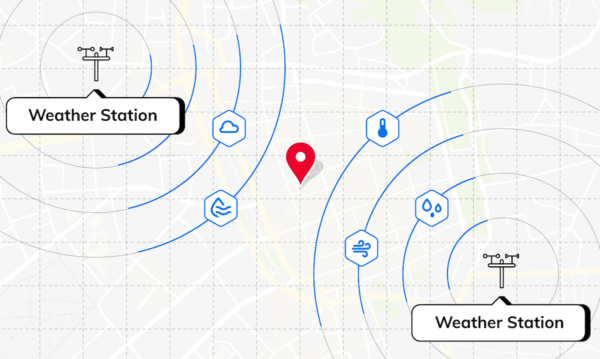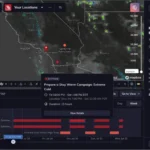When it comes to history, we’ve all heard the famous quote: “Those who cannot learn from history are doomed to repeat it.”
Surprisingly, this is quote is also relevant to any business impacted by the weather.
Whether you’re a shipping company delivering goods across borders or an on-demand company delivering food or an insurance company calculating risk, the weather can impact your plans and cost you money.
But it’s impossible to forecast the future without first understanding the past. That’s why historical weather data is so powerful for business operations.
With historical weather data, you can better predict demand, gauge the risks of specific seasonal weather patterns, and understand it on a global scale.
Combine accurate historical weather data with AI and you gain powerful insights to train your models and predict weather’s impact on your business. This is why every business needs to understand history — specifically, historical weather data.
What is Historical Weather Data?
Historical weather data isn’t simply a database of temperatures in 2020 and for every year back in the record books. While that type of data is useful in some scenarios, weather data can be incredibly in-depth and encompass a wide range of useful data points you may not have thought about before. This includes data like:
- Humidity
- Wind Speed
- Precipitation
- Air Quality
- Flood Risk
- Pollen
- Fire Risk
- …and much more.
Instead of just looking at a simple historical data set for one location and one parameter, you can get far more granular. By looking at a historical reanalysis of gridded data across the globe, you can truly understand how the weather has changed and shifted over time. This enables you to identify patterns and see how the weather will likely change in the coming years.
How Can Your Business Use Historical Weather Data?
While there are many datasets of historical weather data available, not every dataset is equally detailed. Tomorrow.io’s Weather for AI includes 20 years of highly accurate historical weather information for millions of hyperlocal locations worldwide.

This type of data can actually be customized for specific locations, to a necessary resolution, and encompass very specific parameters that are most useful to your business. If you only need historical weather data for the US and only need to understand flood risk for insurance purposes, that specific dataset is available. It’s possible to access the specific data points that are the most relevant for your specific business.
Combining Weather Data with AI
By taking a historical weather data set and feeding it into an AI-powered algorithm, Tomorrow.io’s historical data becomes even more powerful. You can train machine learning models and glean insights into methods to improve business operations and identify gaps and opportunities for growth.
For example, an on-demand business like Uber can understand how historical weather patterns match up to business performance over time. What does that look like? While the team at Uber Eats already knows that food orders spike during rainstorms, historical weather data can answer detailed questions like:
- Do food orders spike even more during snowstorms?
- How does a spike in demand impact ETAs and drive times?
- What areas of the country are most affected by weather-driven demand surges?
These are vital questions for any business to answer, whether you care about the impact of weather on the global supply chain or agriculture. With historical weather data on hand, you can dig into business patterns that you didn’t even know existed. You can not only identify the risks to your business but also potentially find massive opportunities for streamlining operations and — potentially — for growth.
Need historical weather data for your business today?
Get a demo of Weather for AI.







